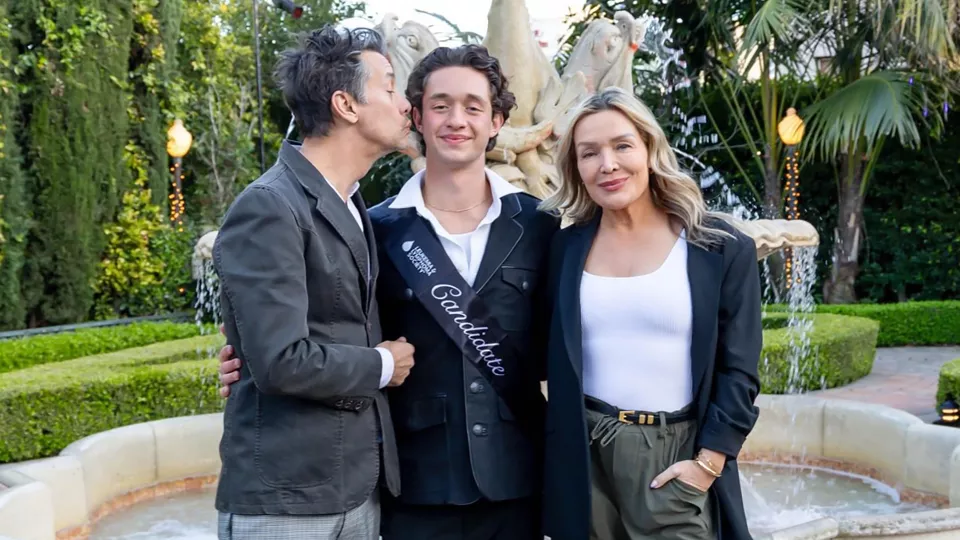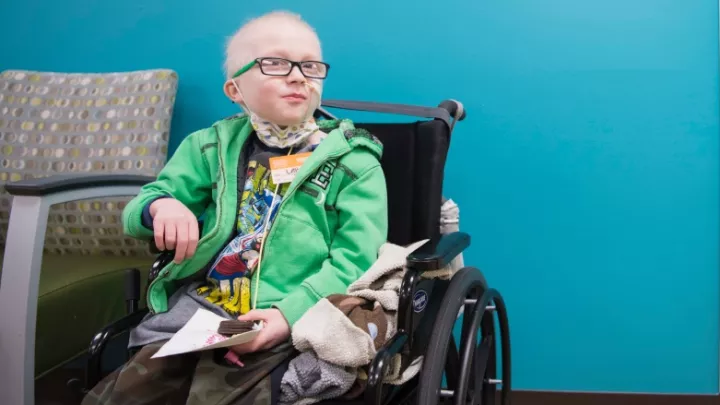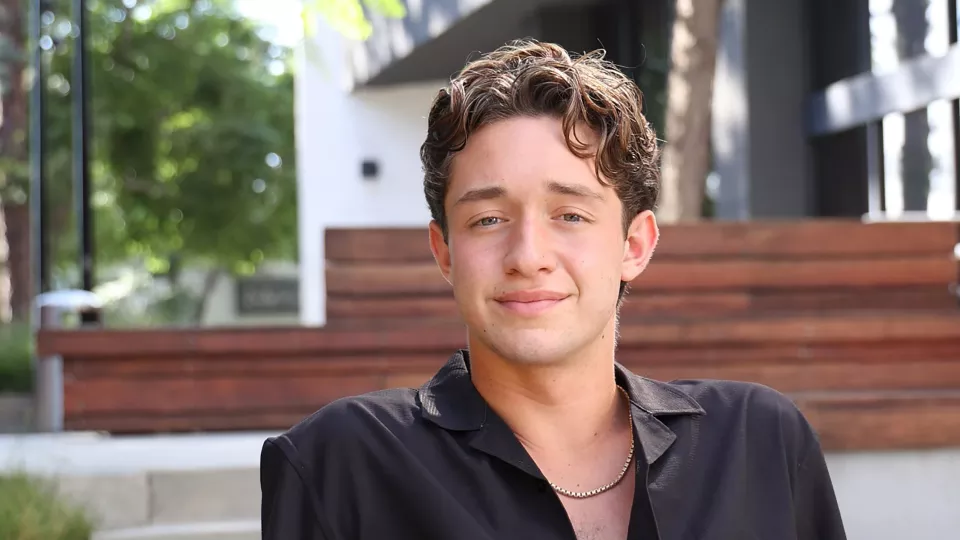
Channeling Challenge Into Community: Hunter’s Story
Hunter doesn’t remember much from his time at Children’s Hospital Los Angeles, but more than a decade later, one small moment has stuck with him in multiple ways.
A blonde woman asks him: What flavor?
“She’d hold up an array of ChapSticks,” Hunter explains, “blueberry, strawberry, green apple, root beer float and chocolate.”
The blonde woman—his nurse—was preparing him for chemotherapy, delivered via his spine. The scented lip balm made wearing an anesthesia mask more palatable. He always chose blueberry.
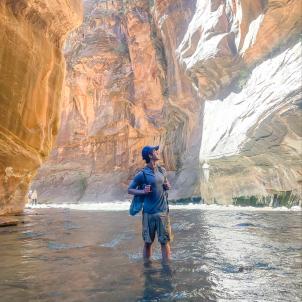
Hunter was 2 years old when doctors first discovered acute lymphoblastic leukemia (ALL) in his blood. He received that uncomfortable spinal treatment, called intrathecal chemotherapy, consistently until he was 5 years old. Now, at age 17, much of his cancer care is a distant memory.
That blueberry ChapStick has the power to transport him back, though. “It’s a scent thing, for sure,” he says. He explains how he even referenced the memory in the opening line of his college essay.
As he enters his senior year of high school, Hunter’s future brims with opportunity: He competes on the swim team, works part-time as a lifeguard, takes as many AP courses as he can manage, and studies for the SAT while serving as a college peer mentor.
For many years, Hunter wasn’t sure how to process his cancer journey—it was too painful and felt far removed from the life he lives now. “I rejected the idea of leukemia when I was younger,” he says.
Over the past year, however, he’s channeled his personal experiences to foster community for fellow survivors and their families. In 2023, he started a Leukemia and Lymphoma Society chapter at his school and raised over $50,000 for leukemia and lymphoma cancer research.
“I felt like I wanted to do something big with that,” he says. So, he did.
The early days: mysterious bruises and a shocking diagnosis
For Hunter’s parents, Zia and Michael, the memories and emotions associated with his ALL diagnosis and treatment remain as vivid as they were 15 years ago.
“He started presenting with a lot of bruises,” his dad, Michael, explains. “It was around the time he was climbing out of the crib, so for a while, we attributed it to that.”

But the bruises kept coming, followed by curious abrasions and bloody noses. At first, their local pediatrician said it was just part of being a 2-year-old—but Zia and Michael weren’t satisfied with that answer. Encouraged by a family member who is a pediatric nurse, they returned to the doctor for further testing.
Tests revealed the answer that turned their world upside down: Hunter had leukemia.
“I don’t even know how we processed it. I just remember falling to my knees,” Zia says. “The next thing we know, we’re at CHLA for 11 days dealing with this crazy, life-changing experience."
Acute lymphoblastic leukemia is a type of cancer that affects the blood, bone marrow and immune system. While chemotherapy is highly effective—about 85% of children beat ALL—treatment comes with many side effects and requires close monitoring for several years.
Leading-edge treatment from the clinic to home
David R. Freyer, DO, MS, met Hunter as a precocious 2-year-old and has helped oversee his care since. He explains that treatment happens in several phases: first, to bring the disease into remission through chemotherapy and other treatments. Then, to ensure remission is permanent, which includes a maintenance phase.
As both an oncologist and the Director of CHLA’s Survivorship and Supportive Care Program, Dr. Freyer supported multiple aspects of Hunter’s care, focusing on both his clinical well-being as well as ensuring Hunter continued to meet developmental milestones as a toddler, preschooler, kindergartner and beyond.
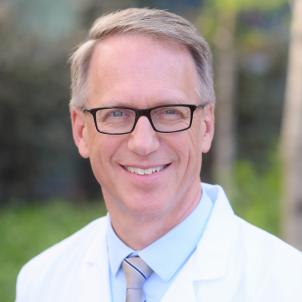
“A lot of what we do is help families navigate critical life events—importantly, continuing to grow up,” Dr. Freyer says. “You can't put all that on pause while they're in treatment.”
“Starting from diagnosis, we're blessed to have a large team of leukemia and lymphoma specialists,” Dr. Freyer adds, emphasizing the advantages of seeking care at a pediatric academic medical center with specialty expertise. “They’re national and international experts in this area. They develop and lead treatment programs and protocols that are used around the world.”
Hunter and his family experienced this leading-edge treatment firsthand: As part of his care, Hunter participated in a clinical trial at CHLA that is now the standard of care for treating ALL.
The trial, known as AALL0232, was sponsored by the Children’s Oncology Group (COG), the world’s oldest and largest scientific organization dedicated to childhood and adolescent cancer. CHLA is one of the largest research hospitals in the COG and doctors at CHLA played crucial roles in designing AALL0232, which has helped make treatment for Hunter’s type of leukemia both more effective and safer for young children.
"A story like Hunter’s is what I always needed to hear”
Dr. Freyer also emphasizes the hospital’s focus on “whole-person care” through the survivorship program, which is now the standard in pediatric oncology: “Due to the ever-improving survival rates in children with cancer, the field of pediatric cancer survivorship began to emerge about 30 years ago,” he says. In fact, he says the world of adult oncology is now beginning to emphasize survivorship for adults treated for cancer. “They're kind of learning from us.”
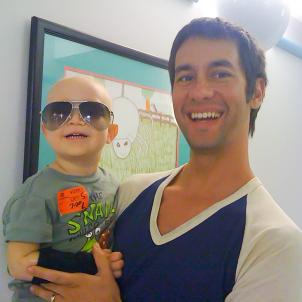
Once patients finish cancer treatment, they visit their treatment team regularly to monitor for recurrence of the leukemia. Within a year or two after ending treatment, patients are referred to the CHLA LIFE Cancer Survivorship and Transition Clinic. In the LIFE Clinic, patients are followed yearly until they’re around 21 years old.
The purpose of these visits is to monitor for late side effects of cancer treatment and to help children thrive as they develop. “They’ll always be survivors of ALL,” Dr. Freyer explains, “but our goal in the LIFE Clinic is to help them return to optimal health, monitor for late-onset side effects, and prevent those whenever possible.”
As Zia reflects on that traumatic time in her family’s life, reassurance from Hunter’s providers that he was receiving top care that incorporates the latest science was key to helping her cope.
“All in all, it wasn't as horrific as one would expect,” she says. “I needed that reassurance myself. I'm hoping this story will help other parents because a story like Hunter’s is what I always needed to hear.”
Answering the call to community
As he grew up, Hunter let his history with leukemia fade into the background. But when he learned his friend, Ian, had lost a family member to the same disease, he realized that connecting to others with similar experiences could be a way to reclaim his story.
“I hated seeing my friend hurt,” Hunter says. “It inspired me to make my experience into something better, to use it as motivation."

That’s when Hunter and Ian decided to start a Leukemia and Lymphoma Society chapter at their high school. The chapter focuses on supporting others affected by leukemia and lymphoma, growing awareness, and fundraising to advance research and treatment.
The group’s first year of fundraising paid off more than Hunter and the team could have ever anticipated. They raised over $50,000 by auctioning off local experiences online and mailing out 300 hand-written letters—contributing to a total $1.8 million raised by society chapters across L.A. County.
Hunter recalls seeing the final number posted onscreen at a Leukemia and Lymphoma Society event: “That was the grand finale of it all. It was a super proud moment.” Survivors joined the group onstage to thank them and tell their own stories. “I’m not an emotional guy, but that was very touching,” he says. “It’s something I'll never forget.”
A bright future ahead

Last year, Hunter volunteered more than 100 hours at his local hospital emergency room. He’s thinking about exploring opportunities in the life sciences after high school graduation and considering studying biology in college.
Returning to CHLA—where his own health care journey began 15 years ago—is far from easy for Hunter or his family. Zia says the emotions flood back as soon as she enters the fourth floor. The connections Hunter has made with his care team help add moments of joy to the experience.
“I see so many faces I might not recognize, but they recognize me from when I was small and stop to give me a hug,” says Hunter. “It's definitely a family.”
“He was just a little guy fascinated by tadpoles, frogs and fish when I first met him,” reflects Dr. Freyer. “Now he’s almost an adult. It’s important to celebrate treatment successes, and Hunter exemplifies that in every way. It’s been a joy to watch him grow up.”
“Hunter is an incredible human being,” Michael says. “He never let his diagnosis put any limitations on him, and recently he’s been reconnecting with that part of himself as the leader of the Leukemia and Lymphoma Society chapter. We’re so proud. I couldn’t be more excited to see what lies ahead for him.”
